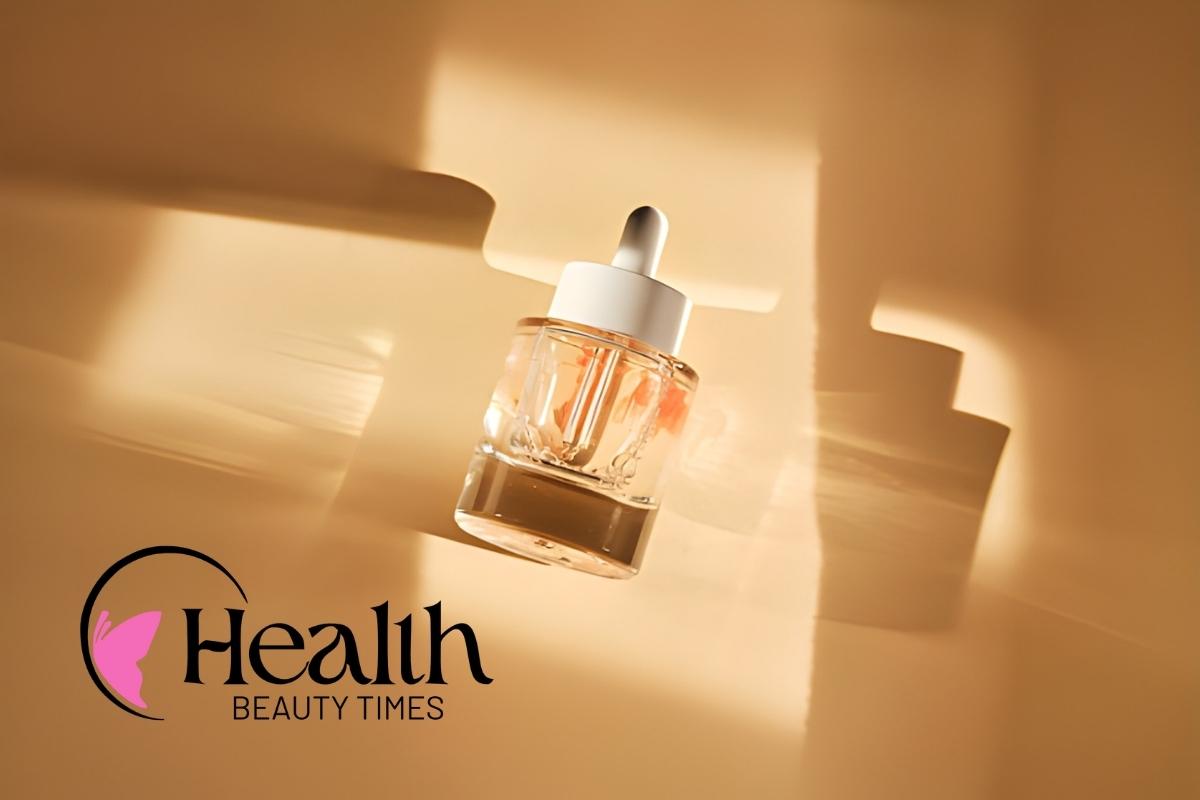If you’ve ever felt like your face could fry an egg by noon, you’re not alone. Dealing with oily skin can feel like a never-ending battle—one day you think you’ve got it figured out, and the next day you’re back to blotting papers and wondering what went wrong.
I’ve been there, and so have millions of others who wake up each morning hoping today will be different. The truth is, managing oily skin isn’t about following some cookie-cutter routine you found online. It’s about understanding what’s happening with your skin and working with it, not against it.
Let’s dive into everything you need to know about skincare for oily skin—the real deal, not the marketing fluff you’ve probably heard before.
Mastering Skincare for Oily Skin
Oily skin needs balance, not harsh stripping. Use gentle cleansers, oil-free moisturizers, and salicylic acid treatments to control shine without overdrying. Incorporate clay masks weekly and always use non-comedogenic products. The right routine reduces breakouts, minimizes pores, and maintains a healthy, matte finish all day
Understanding Your Oily Skin: It’s Not Your Enemy
Before we jump into products and routines, let’s get one thing straight: having oily skin isn’t a curse. Yes, it can be frustrating when your T-zone looks like an oil slick by lunchtime, but that same oil production protects your skin from environmental damage and helps you look younger for longer.
Your skin produces oil (called sebum) through tiny glands called sebaceous glands. These glands are responsible for maintaining the moisture of your skin and protecting it from environmental damage. When these glands go into overdrive, you end up with that shiny, greasy feeling we all know too well. However, here’s what most people don’t realize—this overproduction often occurs when your skin is trying to compensate for a deficiency.
You may be using products that are too harsh, or hormones are playing havoc with your system. Sometimes it’s genetics, and other times it’s stress, diet, or even the weather. For instance, using harsh cleansers, not moisturizing enough, or consuming a diet high in processed foods can all contribute to oily skin. The key to effective skincare for oily skin begins with identifying your triggers.
I remember when I first started taking my skin seriously. I was using every “oil-free” product I could find, washing my face three times a day, and wondering why my skin looked worse than ever. It turns out that I was making it angry, and angry skin produces more oil. Who knew?
Why 2025 is Different for Oily Skin Care
The skincare world has come a long way from the days of harsh astringents and alcohol-based toners. Thank goodness, because those products were doing more harm than good. Today’s approach to skincare for oily skin is more innovative, gentler, and grounded in science.
We now understand that healthy skin has a microbiome, good bacteria that help maintain balance. When you strip away everything with harsh products, you’re disrupting this delicate ecosystem. Modern skincare for oily skin focuses on maintaining this balance while managing oil production.
Additionally, we’re facing new challenges that our parents never had to worry about. Blue light from screens, increased pollution, and climate change all affect how our skin behaves. That’s why the old advice of “just wash your face more” no longer works.
The ingredients available today are also game-changers. We offer gentle yet effective acids, innovative oil-control technologies, and formulations that work with oily skin, rather than trying to eliminate every trace of oil.
The Real Benefits of Getting Your Oily Skin Routine Right
When you nail your skincare routine for oily skin, the changes go beyond just looking less shiny. Here’s what you can expect:
Your skin finds its balance. Instead of swinging between desert-dry and oil-slick, your skin learns to produce just the right amount of oil. This means fewer breakouts, smaller-looking pores, and a natural glow that doesn’t scream “greasy.”
You gain confidence. There’s something liberating about not having to check your reflection every hour or carry blotting papers everywhere. When your skin feels good, you feel good.
You save money in the long run. Effective skincare for oily skin helps prevent problems before they occur—no more expensive spot treatments, emergency dermatologist visits, or cover-up makeup to hide breakouts.
Your skin ages better. Here‘s a secret: oily skin typically shows signs of aging later than dry skin. When you take proper care of it, you’re setting yourself up for healthy, resilient skin for years to come.
The best part? Once you find what works, maintaining healthy oily skin becomes second nature. It’s like learning to ride a bike—once you’ve got it, you’ve got it.
Oily Skin vs. Other Skin Types: What Makes It Different
Understanding how skincare for oily skin differs from other routines helps you make better product choices. It’s not just about buying anything labeled “for oily skin”—it’s about understanding why certain ingredients and textures work better for your specific needs.
Cleansing is more crucial. While someone with dry skin might get away with splashing water on their face in the morning, oily skin needs consistent, thorough cleansing. But here’s the catch—it needs to be gentle, thorough cleaning, not stripping your skin raw.
Lightweight is your friend. Heavy creams and oils that work beautifully on dry skin can clog your pores and make your skin appear greasier. Oily skin thrives with gel-based, water-light formulas that absorb quickly and effectively.
Active ingredients are essential. Ingredients like salicylic acid, niacinamide, and retinoids aren’t just nice-to-haves for oily skin—they’re necessities. They help regulate oil production, prevent clogged pores, and maintain the proper functioning of your skin.
Hydration still matters. This is where many people often go wrong. They think oily skin doesn’t need moisture, but dehydrated oily skin usually produces even more oil to compensate for its lack of moisture. The trick is finding the correct type of hydration.
Building Your Perfect Skincare for Oily Skin Routine
Let’s get practical. Here’s how to build a routine that works, step by step:
Start with the Right Cleanser
Your cleanser is the foundation of good skincare for oily skin. You want something that removes excess oil and impurities without leaving your skin feeling tight or squeaky clean. That squeaky feeling? That’s a sign that your skin barrier, which is a protective layer on the surface of your skin, is being damaged. A damaged skin barrier can lead to increased oil production and other skin issues.
Look for gel or foam cleansers containing ingredients such as salicylic acid or gentle surfactants. Avoid anything with sodium lauryl sulfate—it’s too harsh for daily use. If you wear makeup or sunscreen, consider double cleansing: start with a gentle cleansing oil (yes, oil can be good for oily skin), then follow with your regular cleanser.
I used to think the more my skin felt “clean,” the better. Wrong. Good cleansing for oily skin should leave your face feeling fresh but not stripped.
Choose Your Treatments Wisely
This is where skincare for oily skin gets interesting. You have several powerhouse ingredients to choose from, but the key is to introduce them slowly and not overdo it.
Salicylic acid is your best friend for preventing clogged pores. It’s oil-soluble, allowing it to penetrate your pores and clear out the gunk. Start with a 0.5% concentration and use it every other day.
Niacinamide is gentler but incredibly effective at controlling oil production. It also helps minimize the appearance of pores and reduces redness. You can use this daily, even in the morning.
Retinoids are the gold standard for overall skin health. They accelerate cell turnover, prevent clogged pores, and help regulate oil production over time. Start slowly—maybe once or twice a week—and always use sunscreen during the day.
Don’t Skip the Moisturizer
I can’t tell you how many people with oily skin skip moisturizer, thinking it’ll make them greasier. This is the biggest mistake in skincare for oily skin. When your skin is dehydrated, it produces more oil to compensate for the lack of moisture. It’s like your skin is saying, “Hey, we need moisture up here!”
Choose a lightweight, gel-based moisturizer or a water-based lotion. Look for ingredients like hyaluronic acid, which draws moisture into the skin without adding heaviness. Apply it while your skin is still slightly damp—this helps lock in hydration.
Sun Protection is Non-Negotiable
UV damage makes oily skin worse over time. It can increase oil production, worsen acne, and lead to premature aging. The challenge is finding a sunscreen that doesn’t make you look like a grease ball.
Look for mineral sunscreens with zinc oxide or titanium dioxide. These often have a mattifying effect. If you prefer chemical sunscreens, opt for those specifically formulated for oily skin. And please, reapply throughout the day—your skin will thank you later.
The Best Ingredients for Oily Skin (And Why They Work)
Let’s discuss the ingredients that truly make a difference in skincare for oily skin—understanding why these work helps you make better choices and avoid marketing gimmicks.
Salicylic Acid: The Pore Cleaner
Salicylic acid is a beta-hydroxy acid (BHA) that’s oil-soluble. This means it can penetrate your pores and dissolve the mixture of oil and dead skin cells that leads to blackheads and breakouts. It also has anti-inflammatory properties, which can help calm existing breakouts.
Start with a low concentration (0.5-1%) and use it 2-3 times a week. You can gradually increase frequency as your skin gets used to it. Some people can eventually use it daily, but there’s no need for a rush.
Niacinamide: The Multi-Tasker
Niacinamide (vitamin B3) is like a Swiss Army knife for skincare for oily skin. It reduces oil production, minimizes the appearance of pores, evens out skin tone, and strengthens your skin barrier. Additionally, it pairs well with other ingredients, allowing you to use it with almost anything.
You can use niacinamide in the morning and at night. A concentration of 5-10% is ideal; higher concentrations are not necessarily better and may irritate.
Retinoids: The Long-Term Game Changer
Retinoids (retinol, tretinoin, and adapalene) are among the most extensively studied skincare ingredients available. They accelerate cell turnover, preventing dead skin cells from clogging your pores. They also help regulate oil production and improve skin texture over time.
Start slow with retinoids. Use them once or twice a week initially, and gradually increase frequency. Always use sunscreen during the day when using retinoids, as they can improve your skin’s sensitivity to UV damage.
Hyaluronic Acid: The Hydration Hero
Hyaluronic acid can hold up to 1,000 times its weight in water, making it perfect for hydrating oily skin without adding oil. It’s a humectant, which means it draws moisture from the environment and deeper layers of skin to the surface.
Apply hyaluronic acid to slightly damp skin, then seal it in with moisturizer. This provides maximum hydration without a greasy feeling.
Common Mistakes That Make Oily Skin Worse
Even with the best intentions, it’s easy to make mistakes that sabotage your efforts to improve your skincare for oily skin. Here are the biggest ones I see:
Over-Cleansing and Using Harsh Products
I get it—when your skin feels oily, the instinct is to clean it more. But washing your face more than twice a day or using harsh scrubs and astringents will backfire—over-cleansing strips your skin’s natural protective barrier, causing it to produce more oil to compensate.
Stick to gentle cleansing twice a day. If you feel oily during the day, use blotting papers or a gentle toner on a cotton pad to absorb excess oil.
Avoiding All Moisturizers
This is likely the most common mistake in skincare for individuals with oily skin. Moisturizer isn’t optional—it’s essential. Dehydrated skin produces more oil, gets more irritated, and is more prone to breakouts.
The key is finding the right moisturizer. Look for lightweight, gel-based, or water-based formulas. Your skin should feel hydrated but not greasy after application.
Using Too Many Active Ingredients at Once
It’s tempting to throw every acne-fighting ingredient at your skin, but this approach usually backfires. Using multiple acids, retinoids, and harsh ingredients together can irritate your skin and disrupt its barrier function.
Introduce new active ingredients one at a time. Allow your skin 2-4 weeks to adjust before introducing a new product. Your skin will be happier and healthier with a gentle, consistent approach.
Expecting Overnight Results
Good skincare for oily skin is a marathon, not a sprint. It takes time for your skin to adjust to new products and for cell turnover to improve. Most people begin to see improvements after 4 to 6 weeks of consistent use.
Be patient with your skin. Keep a simple routine, use products consistently, and resist the urge to change everything when you don’t see immediate results.
Advanced Strategies for Stubborn Oily Skin
Sometimes the basics aren’t enough. If you’ve been consistent with a good routine and still struggling, here are some advanced strategies for skincare for oily skin:
Professional Treatments
Chemical peels can help with stubborn oily skin by removing dead skin cells and unclogging pores more effectively than at-home treatments. Professional-grade glycolic or salicylic acid peels can reset your skin and improve texture.
Microneedling, combined with the use of appropriate serums, can help improve the appearance of enlarged pores and enhance overall skin texture. It’s not a magic fix, but it can be a helpful addition to your routine.
Professional extractions done by a licensed esthetician can help with stubborn blackheads and clogged pores. Never try to extract everything yourself—you’ll likely cause more harm than good.
Hormonal Considerations
If your oily skin is linked to hormonal fluctuations, you may need to address the underlying cause. This may involve consulting with a dermatologist or healthcare provider to assess hormonal imbalances.
For some individuals, hormonal acne and oily skin can improve with dietary adjustments, stress management, or hormonal treatments. Don’t be afraid to look beyond topical skincare if needed.
Lifestyle Factors That Matter
Your skin doesn’t exist in a vacuum. Stress, sleep, diet, and environment all affect how your skin behaves. Managing these factors can significantly enhance your skincare results for oily skin.
Sleep is crucial for skin repair and regulation. Aim for 7-9 hours of quality sleep per night.
Stress management helps regulate hormones that affect oil production. Find stress-reduction techniques that work for you—exercise, meditation, hobbies, or whatever enables you to unwind.
Diet can impact skin health. While there’s no one-size-fits-all approach, some people find that reducing dairy or high-glycemic foods helps with oily skin.
Seasonal Adjustments for Your Oily Skin
Your skin’s needs change with the seasons, and your skincare for oily skin routine should adapt accordingly.
Summer Skin Care
Hot, humid weather can exacerbate oily skin. You might need to:
- Switch to lighter moisturizers
- Use oil-absorbing products during the day
- Increase your sun protection
- Consider using a clay mask more frequently
Winter Skin Care
Cold, dry air triggers oily skin to produce more oil in an attempt to compensate for dehydration. You might need to:
- Add a hydrating serum to your routine
- Use a slightly richer moisturizer
- Reduce the frequency of harsh treatments
- Protect your skin from wind and cold
The key is listening to your skin and adjusting accordingly. What works in July might not work in January.
Age-Specific Skincare for Oily Skin
Oily skin changes as you age, and your routine should evolve too:
Teens and Twenties
This is often when oily skin is most problematic due to hormonal changes. Focus on:
- Gentle, consistent cleansing
- Spot treatments for breakouts
- Building good habits early
- Not over-treating the skin
Thirties and Beyond
As you age, oil production typically decreases; however, you may still experience oily areas on your skin. Your routine might include:
- Anti-aging ingredients alongside oil control
- More focus on hydration
- Addressing sun damage and texture issues
- Preventive care for future skin health
The goal is maintaining healthy skin at every age, not just controlling oil.
Troubleshooting Your Oily Skin Journey
Even with the best routine, you might hit some bumps along the way. Here’s how to troubleshoot common issues:
Your Skin is Still Breaking Out
If you’ve been consistent with your routine for 8+ weeks and still breaking out:
- Evaluate your products for pore-clogging ingredients
- Consider whether you’re using too many active ingredients
- Look at lifestyle factors (stress, diet, sleep)
- Consider seeing a dermatologist for prescription options
Your Skin Feels Irritated
If your skin is red, burning, or overly sensitive:
- Scale back on active ingredients
- Focus on gentle, hydrating products
- Give your skin time to heal
- Consider whether you’re over-cleansing
Results Are Inconsistent
If your skin looks great some days and terrible others:
- Track your skin alongside your routine, diet, and lifestyle
- Consider hormonal factors
- Evaluate whether you’re being consistent with your routine
- Look for patterns in what triggers good and bad skin days
Creating Your Skincare for Oily Skin Action Plan
Here’s how to put everything together into a routine that works for your specific needs:
Your Morning Routine
Keep it simple and protective:
- Gentle cleanser – Remove overnight oil without stripping
- Niacinamide serum – Control oil and minimize pores
- Lightweight moisturizer – Hydrate without heaviness
- Sunscreen – Protect from UV damage
Your Evening Routine
This is when you can use more intensive treatments:
- Double cleanse if you wear makeup/sunscreen
- Treatment – Salicylic acid or retinoid (alternate nights)
- Moisturizer – Repair and hydrate overnight
- Spot treatment if needed
Weekly Additions
- Clay mask once or twice a week for deep cleaning
- Gentle exfoliation if your skin can handle it
- A hydrating mask when your skin needs extra moisture
Remember, this is a starting point. Your routine should evolve based on how your skin responds and what you learn about your specific needs.
Your Most Pressing Questions About Oily Skin, Answered
What’s the most essential thing for oily skin care? Consistency trumps everything. A simple routine done daily will be more effective than an elaborate one that you only follow occasionally. Start with gentle cleansing, lightweight moisturizing, and sun protection.
Can oily skin use face oils? Yes, but choose the right ones. Lightweight oils, such as jojoba or squalane, help balance oil production. Avoid heavy oils, such as coconut or olive oil, which can clog pores.
How long before I see results? Most people notice initial improvements in 2-4 weeks, with more significant changes after 6-8 weeks of consistent use. Be patient—good skincare for oily skin is a long-term investment.
Should I use different products in summer vs. winter? Yes, your skin’s needs change with the seasons. Summer may call for lighter products and more oil control, while winter may require extra hydration and gentler treatments.
Can diet affect oily skin? For some people, yes. Dairy and high-glycemic foods can worsen oily skin in specific individuals. Pay attention to how your skin responds to different foods.
Is it normal for oily skin to feel tight after cleansing? No, this usually means your cleanser is too harsh. Your skin should feel clean but not stripped. Switch to a gentler cleanser.
Do I need professional treatments for oily skin? Not necessarily, but they can be helpful for stubborn issues. Start with a good at-home routine, and consider professional treatments if you’re not seeing the results you want.
How do I know if a product is causing me to break out? Introduce new products one at a time, allowing your skin 2-4 weeks to adjust. If you’re breaking out in areas where you don’t usually get acne, the product might be the culprit.
The Bottom Line: Your Oily Skin Journey Starts Now
Managing oily skin isn’t about achieving perfect, matte skin 24/7. It’s about finding balance, building healthy habits, and working with your skin’s natural tendencies rather than fighting against them.
The skincare approach that works best for oily skin is the one you’ll stick with. It’s better to have a simple routine you follow consistently than a complicated one you abandon after a week.
Remember, your skin is unique. What works for your friend or that influencer on social media might not work for you, and that’s okay. Permit yourself to experiment (carefully), be patient with the process, and celebrate minor improvements along the way.
Your oily skin journey is precisely that—a journey. There will be good days and challenging days, but with the right approach, you can achieve healthy, balanced skin that you feel confident in.
The most crucial step is the first one. Start with the basics, be consistent, and trust the process. Your skin has been with you your whole life—it’s time to start treating it like the friend it is.
Don’t Miss These: 7 Shocking Perks Inside the Allure Beauty Box 2025 You’ll Wish You Knew Sooner






